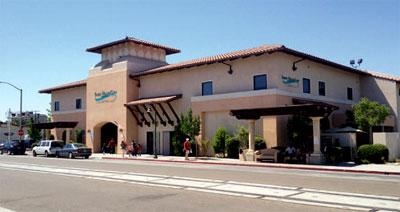EPA Activities for Clean Land
- Superfund Site Cleanups
- From Brownfields to Redevelopment
- Preventing Pesticide Spills
- Environmental Enforcement
Superfund Site Cleanups
EPA oversees cleanup work at 14 Superfund sites in the valley. Cleanup work at most of the 14 sites is either complete or in the final stage, long-term remediation, such as ongoing pumping and treatment of contaminated groundwater. Risks to human health from toxics at all 14 of these sites have been eliminated. For details about each site, click on the site name in the box at right.
Cleanup at Two Superfund Sites in Fresno County
In Malaga, Fresno County, a former oil recycling and refining site left behind extensive soil and groundwater contamination. Cleanup at the Purity Oil site included groundwater extraction and treatment as well as attempts to neutralize and cap contaminated soils. In 2007 the cap was completed, and by 2010 a soil vapor extraction system was removing the remaining soil contamination.
By 2012, EPA found that soil and groundwater contamination had fallen to very low levels, and will continue to drop through natural processes. Groundwater monitoring will continue. Redevelopment of the property will be restricted to commercial and industrial uses, to ensure so that no one will be exposed to contaminated groundwater.
At the Selma Treating site, lumber was treated with toxic chemicals decades ago to prevent rot. Soil and groundwater were contaminated by these chemicals. In 1991-93, EPA excavated 53,000 cubic yards of contaminated soil covering several acres, moved it to an onsite repository, and installed an impermeable cap to prevent water from getting in.
In 1998, EPA started operating a groundwater treatment system. In 2008, EPA began bioremediation, injecting molasses into the soil to feed bacteria that convert toxic chromium-6 to relatively non-toxic chromium-3. EPA turned the site over to the California Department of Toxic Substances Control for long-term maintenance in 2009. The pump-and-treat system continues to operate, and the bioremediation with bacteria is now self-sustaining.
From Brownfields to Redevelopment
Abandoned industrial sites (brownfields) can be a major problem for local governments in the San Joaquin Valley. Developers often won’t touch them for fear of becoming responsible for the cost of cleaning up toxics, and local governments often don’t have the funds to assess whether there’s contamination or not. EPA provides Brownfields grants to assess toxics and plan redevelopment.
Visalia Health Clinic Expansion

Visalia used an EPA Brownfields Community-Wide Assessment grant to target rundown properties for revitalization. In one case, a roofing business in an old, dilapidated building was moving to smaller quarters. The assessment showed that no cleanup was necessary, clearing the way for redevelopment. The Family Health Care Network, Tulare County’s largest non-profit health care provider for low-income clients, bought the property. They razed the old structure and began building a new medical-dental building with 44 exam rooms and 12 dental rooms which can serve 4,500 more people.
Visalia Civic Center Brownfields Grant
EPA helped Visalia to clean up two former railroad properties prior to redevelopment as the future site of the city's new civic center. EPA Brownfields Assessment and Cleanup grants totaling $236,000 were awarded to gain information on contamination and to create and implement a cleanup plan. Ultimately, the proposed civic center site is envisioned to be a mixed-use campus, which includes city offices, private office space, retail space and park facilities. Landscaping and trails would enhance the riparian area around Mill Creek which flows across the property.
West Fresno Brownfields, Urban Garden Plan
West Fresno, which is separated from downtown Fresno by Highway 99, is one of the city’s oldest neighborhoods. Its 35,000 residents, mostly low-income and minority, live alongside both agricultural and industrial operations. EPA provided training to community groups there to develop an action plan for brownfields reclamation. The training will help the community organize and restore brownfield properties.
Preventing Pesticide Spills
Pesticide producers store pesticides in tanks and containers that can hold more than 500 gallons. A new federal regulation took effect recently requiring containment around these tanks, so that spills won’t flow onto the soil or streets. EPA and the California Department of Pesticide Regulation are collaborating to inspect pesticide production facilities throughout the San Joaquin Valley to ensure compliance with the containment rule.
Environmental Enforcement
Under federal law, EPA and the states enforce national regulations for safe transportation, storage and disposal of hazardous wastes, as well as cleanup of abandoned sites. In the San Joaquin Valley, EPA and the California Department of Toxic Substances Control (DTSC) conduct inspections of facilities that handle hazardous wastes and take enforcement actions against violators.
EPA has a long history of enforcement actions involving the Chemical Waste Management (CWM) Kettleman Hills Facility, a commercial hazardous waste treatment, storage and disposal facility located in Kings County. The CWM facility handles polychlorinated biphenyls (PCB) waste, non-PCB hazardous waste and solid waste. EPA regulates PCB waste at the CWM facility under a Toxic Substances Control Act (TSCA) permit. California’s DTSC, authorized under federal law, regulates other hazardous waste under a Resource Conservation and Recovery Act (RCRA) hazardous waste permit.
The Kettleman City Website has extensive information about enforcement and other EPA activities in the area.
